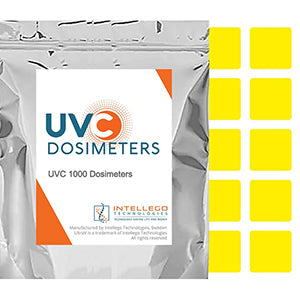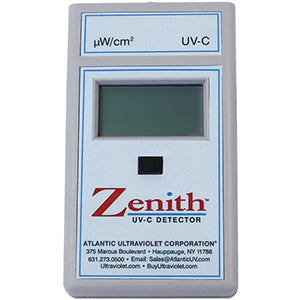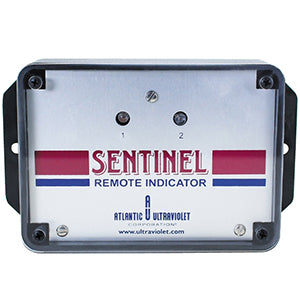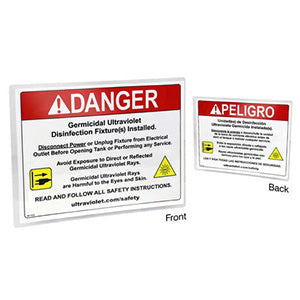UV Measurement & Monitors
ProLampSales offers a wide selection of ultraviolet measurement devices and system monitors. Find the UVC dosimeters, ultraviolet radiometer, or UV system monitor you need easier by clicking on one of the categories below. If you don't see what you are looking for, call 800.784.1998 to speak with one of our lighting specialists. In many cases, we can find the ultraviolet measurement item or system monitor you need at a competitive price.
About Ultraviolet Measurement & Monitoring
UVC Dosimeters
UVC dosimeters come in a variety of shapes and sizes, but the purpose is always the same: to indicate certain amounts of ultraviolet dose have been applied. With germicidal UVC bulbs, this is critical to ensure the air or surface disinfection device has been on long enough to achieve a level of germicidal efficacy.
Not all dosimeters are created equal, though. Depending on the application, dosimeters are available that indicate 6, 14, 25, 50, 100, 500, and 1,000mJ/cm2. These levels roughly indicate some of the following:
- 6mJ/cm2: ACGIH Threshold Limit Value (TLV) for human exposure
- 25mJ/cm2: SARS-CoV-2 inactivation
- 50mJ/cm2: MRSA inactivation
- 100mJ/cm2: C-diff inactivation
- 1,000mJ/cm2: CDC recommended level for N95 mask reuse
In the past, UVC dosimeters were only available for low pressure mercury bulbs. Now, however, versions are available that indicate dose from UVC LED devices that emit UVC radiation between 260-280nm. We should also see excimer lamp (207 and 222nm) dosimeters in the near future.
UV Light Meters
Light meters for ultraviolet radiation are more technical than dosimeters and usually much more expensive, but they are not single-use like dosimeters. They can measure the intensity of UVA, UVB, UVC, or broad spectrum UV light. There are spectroradiometers that also measure the electromagnetic spectrum from ultraviolet to infrared, so are useful for pulsed xenon light sources.
Holding the light meter or remote probe at various distances indicates the intensity of the light at that point. This is especially important for new installations and equipment developers to know how long an ultraviolet device should remain on.
UV System Monitors
Because UVC lights are damaging to human skin and eyes, the ability to monitor a water purification or air/surface disinfection system remotely is important. They can make identifying a problem and routine maintenance easier.
These UV system monitors are typically connected to the ultraviolet equipment and then mounted in a different room but will indicate a variety of metrics related to the germicidal lamps, including the following:
- Alerts or indicator lights for lamp failure
- Elapsed time indicators
- Level of germicidal energy
- Bulb, component, or power failure
Indoor Air Quality Monitors
Our indoor air quality monitors provide important information to business and commercial customers about the air quality of their buildings. They are designed to be used in individual rooms and are able to monitor particular matter (PM), total volatile organic compounds (TVOC), CO2, temperature, humidity, and ozone.
When used in conjunction with ultraviolet systems like room air purifiers, upper air sanitizers, and UVC HVAC systems, these monitors can indicate and track an improvement in overall air quality, either on a room-by-room basis or throughout a building. They can also help indicate if a UVC lamp has failed or is declining in overall UV output, as air quality may decline.
We also carry a number of industrial gas detectors, which are designed for use in industrial and manufacturing facilities to monitor dangerous gases.
Safety Signs & Equipment
Because ultraviolet germicidal systems are designed to be used in unoccupied spaces, safety signs provide an extra layer of protection for people. While many UVC fixtures come with an auto-shut off feature like an occupancy sensor, others use simple on/off operation.
We also offer several types of personal protective equipment to reduce the risk of accidental UV exposure. These include face shields and glasses.








